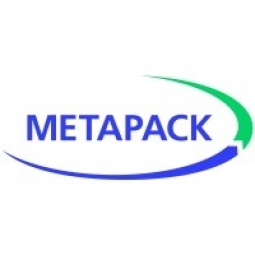公司规模
Large Corporate
地区
- Europe
国家
- United Kingdom
产品
- MetaPack Manager
- Intelligent Allocation
- Automation
- Data Analysis
技术栈
- E-commerce platform
- Barcode system
- SMS and Email notification system
实施规模
- Enterprise-wide Deployment
影响指标
- Customer Satisfaction
- Cost Savings
技术
- 应用基础设施与中间件 - 数据交换与集成
适用行业
- 零售
适用功能
- 物流运输
- 销售与市场营销
用例
- 供应链可见性(SCV)
- 库存管理
服务
- 系统集成
- 软件设计与工程服务
关于客户
John Lewis is one of the UK's largest omnichannel retailers, covering three core businesses: grocery retailing, department stores, and financial service protection products. Since its first opening in Oxford Street in 1864, John Lewis has grown to include 41 shops throughout the UK as well as a strong online offering. The company's goal is to seamlessly link online shopping with the traditional shop experience, while still providing exceptional service to customers. The company includes 41 John Lewis shops and 317 Waitrose supermarkets, and it was established in 1864 with its head office in London.
挑战
John Lewis, one of the UK's largest omnichannel retailers, aimed to seamlessly link online shopping with the traditional shop experience while still providing exceptional service to customers. The company pioneered its first click and collect service in 2008, enabling shoppers to choose from over 200,000 products on johnlewis.com for free delivery to local John Lewis or Waitrose shops. However, the company faced challenges in improving the cross-channel shopping experience, enabling click and collect ordering, streamlining the delivery of large products to customer addresses, and providing detailed tracking information.
解决方案
John Lewis adopted MetaPack Manager to address its needs. The implementation took just four weeks. The company now uses MetaPack’s configurable file import system to upload one order file daily. Carrier selection is confirmed and labels are printed in bulk or individually. Stores are able to access orders via the web by customer name, postcode, and order number. MetaPack informs the customer whether an order is waiting for despatch or in transit, and provides a wide range of status updates as the delivery is made. When the customer places an order online, it is processed and the items are picked from the warehouse. MetaPack then automatically determines whether the order should go via John Lewis’ own fleet or an alternative third-party carrier. As the fleet only track loads as a whole, MetaPack’s specially designed label and barcoding system ensures parcels can be identified and subsequently scanned into the store to confirm arrival.
运营影响
数量效益

Case Study missing?
Start adding your own!
Register with your work email and create a new case study profile for your business.
相关案例.

Case Study
Improving Production Line Efficiency with Ethernet Micro RTU Controller
Moxa was asked to provide a connectivity solution for one of the world's leading cosmetics companies. This multinational corporation, with retail presence in 130 countries, 23 global braches, and over 66,000 employees, sought to improve the efficiency of their production process by migrating from manual monitoring to an automatic productivity monitoring system. The production line was being monitored by ABB Real-TPI, a factory information system that offers data collection and analysis to improve plant efficiency. Due to software limitations, the customer needed an OPC server and a corresponding I/O solution to collect data from additional sensor devices for the Real-TPI system. The goal is to enable the factory information system to more thoroughly collect data from every corner of the production line. This will improve its ability to measure Overall Equipment Effectiveness (OEE) and translate into increased production efficiencies. System Requirements • Instant status updates while still consuming minimal bandwidth to relieve strain on limited factory networks • Interoperable with ABB Real-TPI • Small form factor appropriate for deployment where space is scarce • Remote software management and configuration to simplify operations

Case Study
Digital Retail Security Solutions
Sennco wanted to help its retail customers increase sales and profits by developing an innovative alarm system as opposed to conventional connected alarms that are permanently tethered to display products. These traditional security systems were cumbersome and intrusive to the customer shopping experience. Additionally, they provided no useful data or analytics.

Case Study
How Sirqul’s IoT Platform is Crafting Carrefour’s New In-Store Experiences
Carrefour Taiwan’s goal is to be completely digital by end of 2018. Out-dated manual methods for analysis and assumptions limited Carrefour’s ability to change the customer experience and were void of real-time decision-making capabilities. Rather than relying solely on sales data, assumptions, and disparate systems, Carrefour Taiwan’s CEO led an initiative to find a connected IoT solution that could give the team the ability to make real-time changes and more informed decisions. Prior to implementing, Carrefour struggled to address their conversion rates and did not have the proper insights into the customer decision-making process nor how to make an immediate impact without losing customer confidence.

Case Study
Ensures Cold Milk in Your Supermarket
As of 2014, AK-Centralen has over 1,500 Danish supermarkets equipped, and utilizes 16 operators, and is open 24 hours a day, 365 days a year. AK-Centralen needed the ability to monitor the cooling alarms from around the country, 24 hours a day, 365 days a year. Each and every time the door to a milk cooler or a freezer does not close properly, an alarm goes off on a computer screen in a control building in southwestern Odense. This type of alarm will go off approximately 140,000 times per year, equating to roughly 400 alarms in a 24-hour period. Should an alarm go off, then there is only a limited amount of time to act before dairy products or frozen pizza must be disposed of, and this type of waste can quickly start to cost a supermarket a great deal of money.

Case Study
Supermarket Energy Savings
The client had previously deployed a one-meter-per-store monitoring program. Given the manner in which energy consumption changes with external temperature, hour of the day, day of week and month of year, a single meter solution lacked the ability to detect the difference between a true problem and a changing store environment. Most importantly, a single meter solution could never identify root cause of energy consumption changes. This approach never reduced the number of truck-rolls or man-hours required to find and resolve issues.








